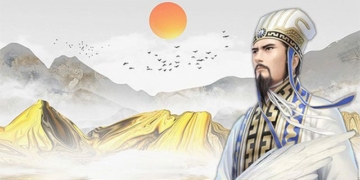Before the ancient Egyptians practiced mummification, the desert naturally preserved the dead for them.
The way the ancient Egyptians treated the dead is perhaps the most famous in the world, from constructing colossal pyramids to filling underground tombs with treasures and luxurious artifacts. Additionally, their method of mummifying to preserve the bodies of the deceased was also remarkably unique.

The coffin containing the mummy of a merchant from 2,500 years ago, discovered in Giza, Egypt, in 2005. This tomb dates back to the 26th dynasty, but is it the oldest evidence of mummification in Egypt? (Photo: Getty).
However, when did the ancient Egyptians begin mummifying the dead? According to researcher Stephen Buckley from the University of York, England, scientific evidence clearly indicates that the practice of mummification in Egypt dates back to around 4,300 BC.
This evidence consists of 6,300-year-old embalming materials found in an ancient Egyptian cemetery at Mostagedda, located about 320 km south of Cairo. In the early 20th century, tombs in this area were excavated, and the embalming materials were sent to England, where they are currently stored at the Bolton Museum.
The research team led by Buckley tested these embalming materials and discovered that they contained various types of resins specifically used for mummification. The test results also indicated that these resins were made from different components such as vegetable oils, animal fats, beeswax, and tree sap. In later periods, the ancient Egyptians also used similar resins for mummification.
Considering the timeline of 4,300 BC, this was around 1,000 years before the Egyptians developed hieroglyphs and approximately 1,500 years before they began constructing pyramids. It was also about 1,000 years prior to Egypt being unified under a single Pharaoh.
Natural Mummification
The oldest evidence of humans practicing mummification techniques is around 4,300 BC, but the Egyptians had long utilized nature to mummify the dead well before that.
According to researcher Buckley, natural mummification is a spontaneous process that takes advantage of existing burial conditions, such as being buried in dry, hot sand. However, the Egyptians did not intentionally devise a method for mummifying the dead.
Professor Salima Ikram, an Egyptologist at Cairo University, states that there is evidence suggesting that bodies were being mummified as far back as 5,000 BC, and it might have even been earlier.
Even after the practice and methods of mummification had developed, many Egyptians continued to mummify naturally because they lacked the means for artificial mummification. Consequently, corpses were buried in the desert. The simple method most Egyptians at that time employed was to dig a hole and bury the body without any further preparation.
Professor Ikram suggests: “We do not know what the ancient Egyptians thought at the time, but regardless of who was buried in those sandy graves, being far from a water source and not being wrapped in linens, animal skins, or coffins allowed for natural mummification.”
As Christianity spread in Egypt, the practice of artificial mummification gradually declined. While the religion of the ancient Egyptians emphasized the importance of preserving the body for the afterlife, Christianity did not hold that belief. As a result, the practice of mummification faded away over time.


















































